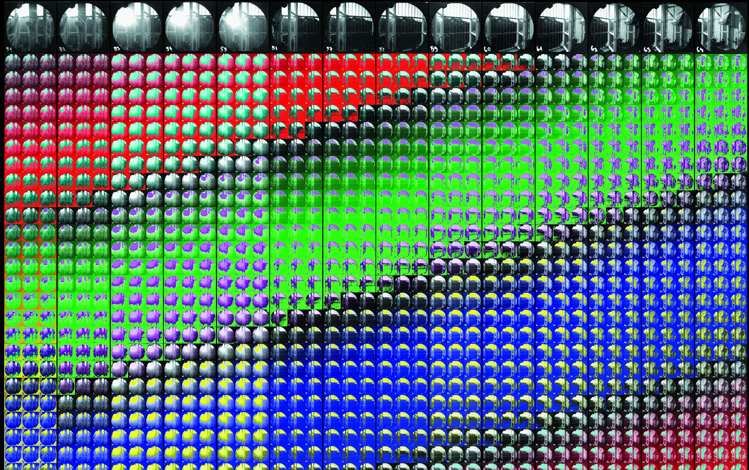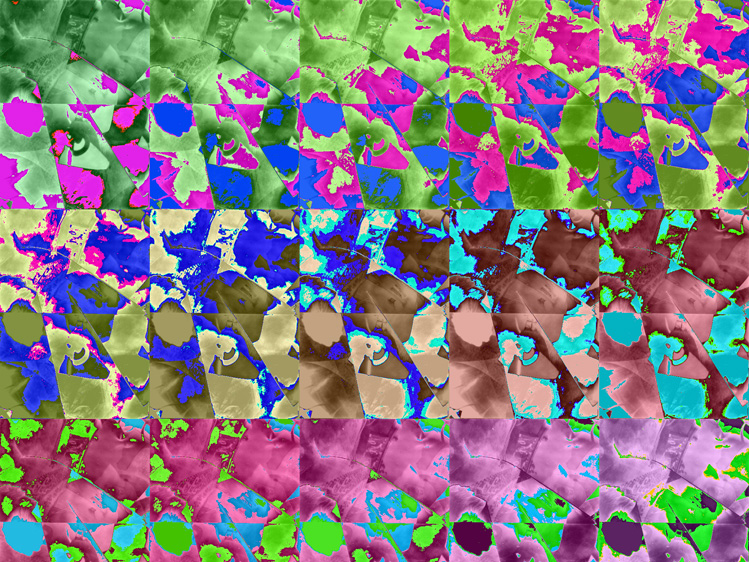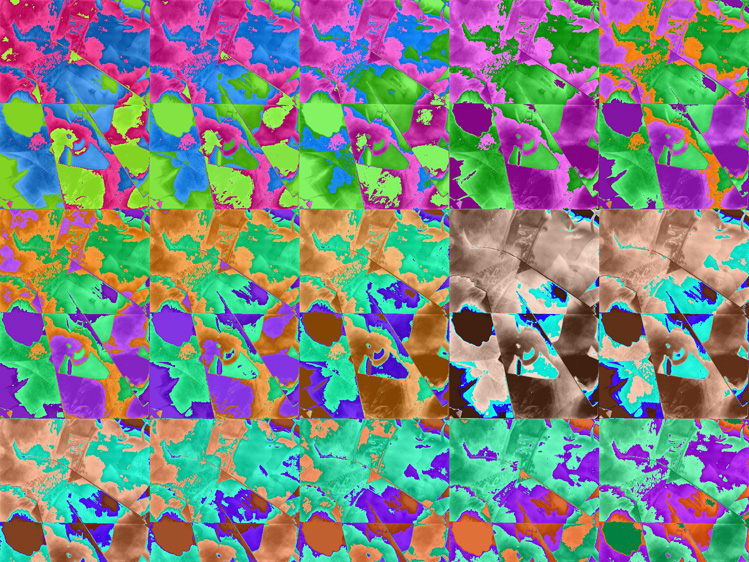|
Zoltán Szegedy-Maszák |
|
|
Related works: Steganogram: Stereogram, Blockdiagrams The relationship between the original and the copy is often discussed in visual arts, especially referring to technological images. A poor video copy, a trash monitor, or a bad quality print, can convey far less information than their originals. The first solution to this technical problem came with digital media, with the possibility to produce an infinite number of copies that are identical with the original. |
|
|
|
An artist who works with digital image surfaces must reckon with the finite number of views that can be captured at a given resolution. This actually means that you simply choose one from among the available image variations. You must also remember that as much as it is possible to make perfectly intact copies of your work, it will often be reduced in size so as to be compatible with the recipient’s display. Smaller (rougher) resolution implies fewer displayable image variations, but the original, large amount of information can only be represented in a single way on the device. With the reversed process, however, the correlation is not so direct: probably, even presumably, there will be images that look the same even after scaling down. In the same way as aging sprouts develop new side branches, reproducible images on digital canvases increase in number from smaller resolutions towards higher ones, resembling a tree structure, but their number will remain finite and countable. The reason for this is that each digital image is comprised of a given number of pixels, and each pixel can glitter in a given array of colours: “… For example, let us take a monitor that is able to represent 1000x1000 pixels, on which you can set 24 bits, i.e., 224 colour shades per pixel. It means that the number of images it can represent is the one-millionth power of 16777216. This is the number of all the possible views at such resolution. It is an immense number indeed; still, a finite value. It includes all the paintings, photographs and computer graphics ever possible to create; all the reproductions of every possible object at every manner of exposition, every possible printed text, etc., at the given level of definition. The majority of possible views are but meaningless “noises”. Qualitatively, less view is partly meaningful, but still perturbed with chance errors. Views devoid of noise-like chance errors are characterised by smaller orders of magnitude. Yet another fraction of these images could be regarded as “aesthetically valuable” artworks. Obviously, we are interested in the latter set of images, which can hardly be defined in an exact manner…” (dr. László Neumann: Képhiba [Image Error]. In: Peternák, Miklós (ed.): Új képkorszak határán – A számítógépes grafika és animáció kezdetei Magyarországon. Számalk, Budapest 1989) |
|
|
|
In the title of a few works or series, I referred to the fleet-footed Greek hero’s running contest with the trudging turtle in Zenon’s first paradox. My point of departure was based on the contention that a digital image is no more than the visualization of a sequence of numbers describing the image; a type of diagram. Consequently, all the possible combinations of the sequence of numbers describing the image can be produced without human intervention, by running simple computer programs. You may read a detailed description of the methods based on simple combinatorial algorithms that I used to urge the fast heroes of our epoch – digital automatics – to chase possible views (http://szmz.hu/Achilleus/). Such a point of departure, where a digital image is conceived as a graph, as a sequence of numbers, is present in other works of mine, too. |
|
|
|


